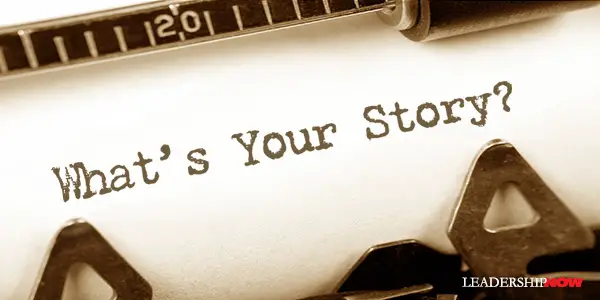 |
 |
01.07.19

What’s Your Story?
WHAT GREAT LEADERS have in common is their ability to communicate and create meaning from their words. Much of that ability speaks to the ability to listen and read between the lines to develop an understanding with those you lead. Great stories begin with great listening. From there, you can learn how to connect your perspective to theirs. Leaders are in a different place from those they lead. A story that is large enough that it aligns with their values inspires them to make the journey to where you are. This is especially important today when ironically, our ability to communicate in a meaningful way is deteriorating. The structures we used to have to develop that skill are diminished. Bursts of thought do not help to create the empathy we need to function effectively as a civilization. We don’t connect in bursts of thought but in shared stories. A good story can set the tone for a deeper connection and empathy for another’s perspective. In a September 2018 interview with Fast Company magazine, Doris Kearns Goodwin talks about her book, Leadership: In Turbulent Times, and the ability of the four presidents she delved into to communicate through stories. Each of the presidents she portrays could help their audience see themselves in the future they were describing. A well-crafted story has the power to give the audience ownership of the idea that is woven into the story. Goodwin is asked, “What’s the most important lesson that business leaders can take from these presidents?” If I were to pick one, it would be the ability to speak to audiences with stories. [Take] Abraham Lincoln: While we celebrate his beautiful language, his speeches really worked because they were filled with stories and illustrations. He believed people remembered anecdotes better than facts and figures. When he was young, he would listen as his father, and the people who would come by his little log cabin told stories. He’d go to bed at night and try to translate those stories into [his] words, so he could then go out on the field the next day, stand on a tree stump—he’s like eight, nine years old—and entertain his friends. Goodwin adds this about Theodore Roosevelt’s ability to relate—even today: What really interests me is thinking about which of these [presidents] would give a speech that would be relevant today. It would probably be Teddy Roosevelt. Think about where we were at the turn of the 20th century: The industrial revolution had shaken up the economy, immigrants were pouring in, cities were replacing towns. A gap was developing between the rich and the poor, and the social landscape was changing because of all these new inventions: the automobile, the telegraph, and the telephone. You had populist movements that called for restrictions on immigration, and the establishment worried about [giving] power to ordinary people. Ryan Matthews and Watts Wacker begin their book, What’s Your Story? with this observation: “Long before the first formal business was established, before the first deal, the six most powerful words in any language were Let me tell you a story. What’s your story?
Posted by Michael McKinney at 12:03 AM
|
BUILD YOUR KNOWLEDGE
 

How to Do Your Start-Up Right STRAIGHT TALK FOR START-UPS 
Grow Your Leadership Skills NEW AND UPCOMING LEADERSHIP BOOKS 
Leadership Minute BITE-SIZE CONCEPTS YOU CAN CHEW ON 
Classic Leadership Books BOOKS TO READ BEFORE YOU LEAD |